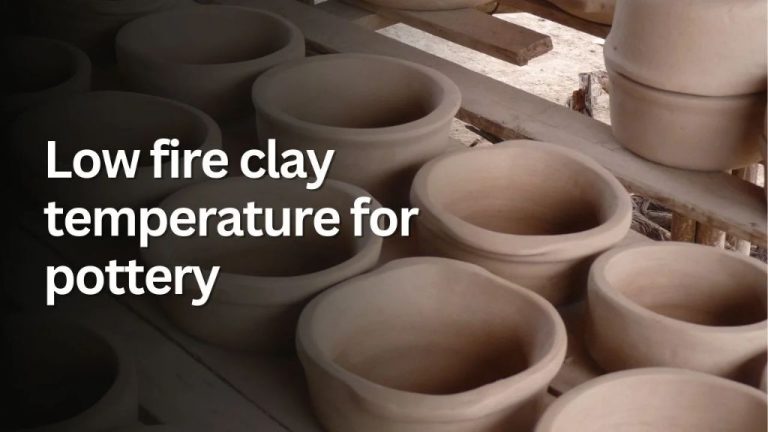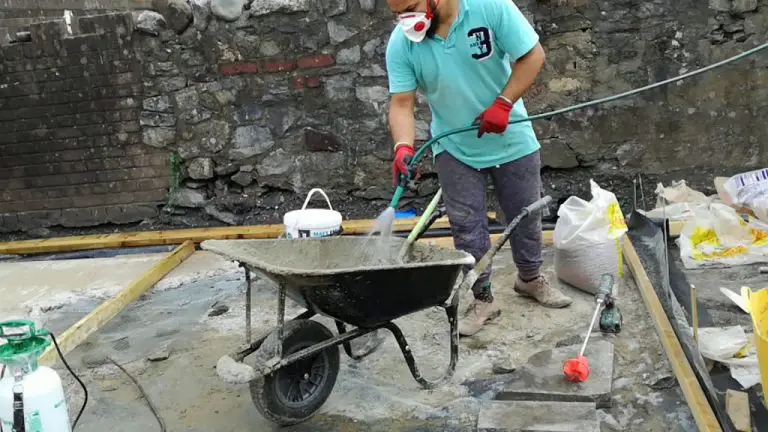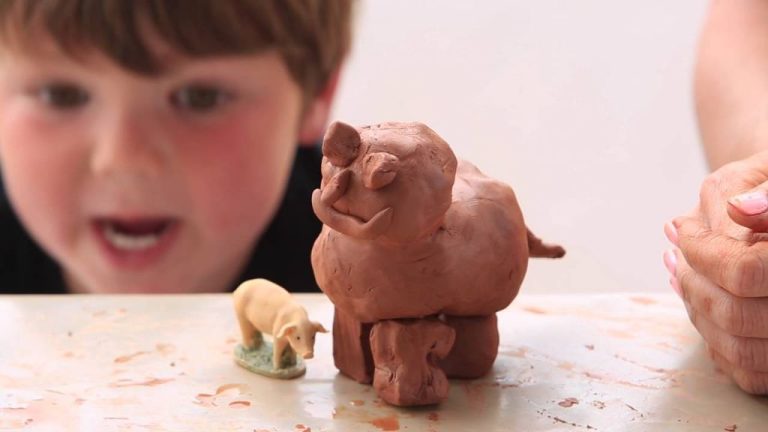How Do You Dye Whipped Clay?
Whipped clay is a lightweight, aerated clay modeling material that is popular for polymer clay crafts and DIY projects. It has a fluffy, marshmallow-like texture that allows it to be easily shaped into decorative objects. Dyeing whipped clay is a fun way to add vibrant colors and patterns to your clay creations.
There are several reasons to dye whipped clay. Adding color provides more visual interest and customization options for projects. It allows you to match specific hues that may not be available in standard clay packages. Dyeing also lets you marble or blend multiple colors into the clay for unique effects. Overall, dyeing whipped clay expands the possibilities for designing colorful clay crafts and jewelry.
Materials Needed
To dye whipped clay, you will need the following materials:
Clay – Use a lightweight polymer clay like Sculpey or Fimo that whips to a fluffy texture. The softer the clay, the easier it will be to incorporate color throughout.
Clay dyes or other colorants – Choose soft, concentrated clay dyes specifically formulated for polymer clay. Liquid and powder dyes work well. You can also use chalk pastels, oil pastels, eye shadows, acrylic paints or soft drink powders to add color.
Mixing tools – Have on hand a variety of tools for mixing the clay and dyes like silicone sculpting tools, popsicle sticks, toothpicks, cocktail straws, plastic knives, etc. Cookie cutters, stamps and stencils can add patterns and shapes.
Choosing Clay Dyes
When selecting dyes for coloring polymer clay, you have a few options to consider:
Oil-based dyes – These concentrated liquid dyes are specifically formulated for coloring polymer clay. They come in a wide variety of vibrant colors and work well for both solid color and marbled effects. Oil-based dyes are easy to mix into clay evenly. However, they can leech color over time and require sealing the clay after baking.
Powdered pigments – Also known as mica powder, these dry powder pigments can be mixed into clay to tint it or create a mottled effect. They come in shimmery metallic colors. Powdered pigments take more effort to mix in evenly compared to liquid dyes. The finished effect is subtle and sheer.
Acrylic paint – Standard acrylic craft paints can be thinned with water and blended into polymer clay to color it. The color effects tend to be semi-opaque rather than bold and vibrant. Acrylics require more mixing effort and some brands may not bake properly at the high temperatures needed to cure polymer clay.
When selecting dyes, consider the type of clay coloring projects you will make. Oil-based dyes work best for solid opaque colors. Powdered pigments excel for marbled techniques. Acrylic paints can be used in small amounts for light tinting. Test dyes on a clay brand to ensure compatibility before using them on finished pieces.
Preparing the Clay
Before dyeing polymer clay, it’s important to properly condition and whip the clay to prepare it for incorporating color. Conditioning involves kneading the clay to make it smooth and pliable. Start by cutting the clay into smaller pieces and kneading it firmly with your hands. Fold the clay over itself and press down as you knead to force out any air bubbles. Continue kneading until the clay is soft, smooth, and elastic.
Once conditioned, the clay must be whipped. Whipping incorporates air into the clay which allows the dye to penetrate evenly. To whip the clay, continue kneading and folding the clay over itself, but do so more gently and rapidly. As you fold and stretch the clay quickly, small air bubbles will develop throughout giving the clay a lighter, airier texture. Whip the clay for a few minutes until it doubles in size and becomes lighter in color. The clay is now ready for adding dyes!
Adding Color
When adding color to whipped polymer clay, it’s important to use the right amount of dye and mix it in thoroughly for even color distribution. Here are some tips:
Amount of dye: Start with just a small amount of clay dye, no more than a pea-sized drop or two. It’s easy to add more dye, but difficult to remove excess. Mix in the dye and test the color before adding more.
Mixing: Thoroughly knead the dye into the clay, continuing to fold and massage until the color is evenly distributed. There should be no streaks or swirls. Pinch off a small piece and roll into a snake to check for consistency.
Even color: After initially mixing in dye, the color may appear uneven or show lighter and darker areas. Continue mixing and kneading the clay, folding it over itself repeatedly, until the color is uniform throughout. Test multiple areas of the conditioned clay to ensure even saturation.
By starting with a minimal amount of dye and taking time to properly mix and distribute the color, you’ll get beautiful, vibrant, evenly colored clay for your projects.
Marbling Techniques
Marbling is a fun way to create colorful, painterly effects in whipped polymer clay. There are a few different marbling methods you can try:
Liquid Marbling
This technique involves dripping liquid clay dyes onto the surface of the whipped clay and then swirling to create marbleized patterns. Here’s how to do it:
- Condition your clay by kneading until soft and pliable.
- Roll conditioned clay into a smooth ball.
- Using an acrylic roller, roll the clay out onto a smooth work surface until it is about 1/4 inch thick.
- Apply a few drops of liquid clay dye in various colors onto the surface of the clay sheet.
- Use a skewer or toothpick to swirl the colors together, creating flower-like patterns.
- Avoid over-mixing, as the colors will become muddy.
Alcohol Ink Marbling
For this method, alcohol inks are applied to the surface of a container of alcohol and then swirled before pressing the clay into it to pick up the design. Steps include:
- Fill a shallow container with isopropyl alcohol.
- Apply drops of alcohol ink in various colors to the surface of the alcohol.
- Use a skewer to swirl the inks in circular or zig-zag motions.
- Press a sheet of conditioned polymer clay onto the alcohol surface to pick up the ink design.
- Remove clay and allow alcohol to fully evaporate before baking.
Additional Coloring Methods
In addition to using clay-specific dyes, there are other creative ways to color your whipped clay.
Inks
Certain inks can be mixed into whipped clay to tint it or create patterns. Alcohol inks work especially well since they are concentrated and vivid. Try adding a few drops into the clay and kneading to distribute the color. Alcohol inks produce a stained-glass effect in translucent polymer clay.
Acrylic Paint
Acrylic paint can also be kneaded into whipped clay, but use it sparingly. Too much acrylic paint will make the clay brittle. Metallic acrylic paints add a fun shimmer.
Mica Powders
Mica powders are cosmetic-grade shimmery mineral pigments that blend beautifully into polymer clay. Mix them in like you would clay dye. Mica powders come in an array of iridescent colors to give your clay a pearlescent sheen.
With the right add-ins and techniques, you can create one-of-a-kind whipped clay in any color imaginable. Get creative with different media to make clay that’s truly unique.
Baking Dyed Clay
Properly baking dyed clay is important to fully cure the clay and set the colors. When baking polymer clay, follow the manufacturer’s recommended baking times and temperatures. Typically, clay should be baked between 130°C and 150°C for 15 to 30 minutes per 6mm of thickness.
To prevent color changes during baking, avoid exposing dyed clay to direct contact with oven racks. Place the clay on a baking sheet or use paper to prevent contact. Baking too long or at too high of a temperature can also cause colors to fade or change. When using multiple colors of clay, batch bake similar colors together since darker colors may cure faster than lighter ones.
After baking, allow the clay to cool completely before handling to ensure colors remain vibrant. When baking is complete, the clay should be hard and durable. If it remains sticky or flexible, return to the oven for additional curing time.
Project Ideas
Dyed polymer clay opens up a world of possibilities to create beautiful, colorful crafts. Here are some ideas for clay projects that showcase dyed clay:
Jewelry:
- Beads
- Pendants
- Bracelets
- Earrings
- Rings
The sky’s the limit with jewelry – try alternating solid dyed beads with marbled beads to make interesting patterns and color combinations. Dyed clay is also perfect for embedding in jewelry charms, focal beads, cabochons, and more.
Figurines:
- Miniatures
- Charms
- Magnets
- Ornaments
Sculpt your dyed clay into any shape imaginable, from animals to food to characters. The colored clay results in professional, vivid designs.
Home Decor:
- Magnets
- Coasters
- Tiles
- Boxes
- Picture frames
Add a pop of color to any room with dyed clay home accents. Frame your favorite photos with dyed clay, or use marbled clay tiles to decorate coasters, boxes, and more.
[Photos of dyed clay jewelry, figurines, and home decor items]
The possibilities are endless when you unlock the potential of dyed polymer clay! Let your creativity run wild and make something beautiful.
Troubleshooting
Even when following the proper techniques, you may encounter some issues when dyeing polymer clay. Here are some tips for troubleshooting common problems:
Fixing Color Bleed or Fading
If you notice the color bleeding or fading unevenly when baking polymer clay, there are a couple things to try:
- Make sure to bake the clay according to package directions – underbaking can lead to issues with stability of the colors.
- Avoid overmixing colors together – the more the clay is worked, the more the colors may bleed into one another.
- Try adding a bit more clay dye pigment to areas that seem faded and knead it in gently.
Re-Dyeing Discolored Clay
For clay that has already been baked and discolored, you can attempt to re-dye it with alcohol inks or acrylic paint:
- Lightly sand the surface of the baked clay to rough it up slightly.
- Apply alcohol inks or thin acrylic paints. The roughed up surface will allow the colors to adhere better.
- Let the clay fully dry after re-dyeing before handling.
While re-dyeing may not achieve the initial vibrancy, it can often improve discoloration issues.




